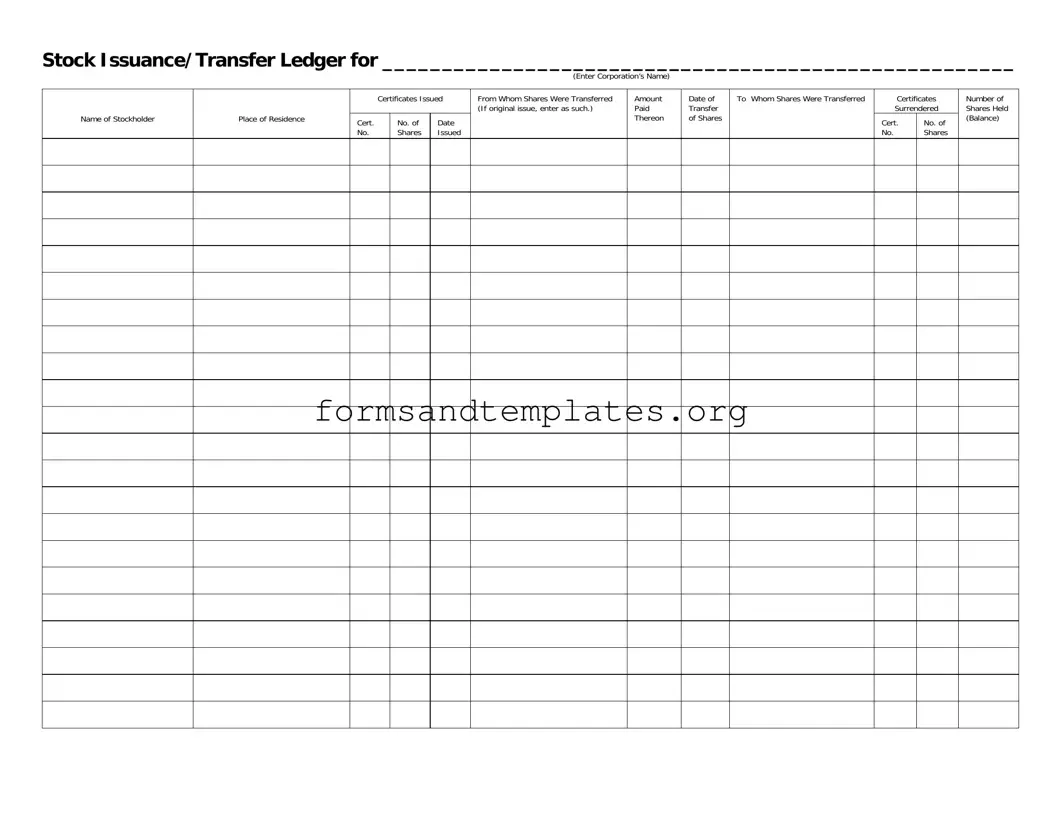The Stock Transfer Ledger form is a document used by corporations to track the issuance and transfer of stock shares. It provides a detailed record of stockholders, including their names, addresses, and the number of shares they hold. This form is crucial for maintaining accurate records of ownership and ensuring compliance with legal requirements.
Why is it important to maintain a Stock Transfer Ledger?
Maintaining a Stock Transfer Ledger is essential for several reasons:
-
It ensures accurate tracking of stock ownership.
-
It helps the corporation comply with state laws regarding stock issuance and transfers.
-
It provides clarity in case of disputes regarding ownership.
-
It assists in the calculation of dividends and voting rights based on the number of shares held.
The form should be filled out by the corporation's designated officer, typically the secretary or treasurer. This individual is responsible for maintaining accurate records of stock transactions and ensuring that all necessary information is captured correctly.
The form requires several key pieces of information, including:
-
The corporation's name.
-
The name of the stockholder.
-
The stockholder's place of residence.
-
The certificates issued and their corresponding certificate numbers.
-
The number of shares issued.
-
Details about the transfer, including the date of transfer and to whom the shares were transferred.
-
The amount paid for the shares.
-
The number of shares held after the transfer.
What happens if a stockholder loses their stock certificate?
If a stockholder loses their stock certificate, they should notify the corporation immediately. The corporation may require the stockholder to complete an affidavit of loss and may issue a replacement certificate. It's important to act quickly to prevent unauthorized transfers of the lost certificate.
Can the Stock Transfer Ledger be updated after it has been filled out?
Yes, the Stock Transfer Ledger can and should be updated to reflect any changes in stock ownership. Whenever shares are transferred or new shares are issued, the ledger must be updated to maintain accurate records. This ensures that all stockholder information is current and reliable.
How long should the Stock Transfer Ledger be maintained?
The Stock Transfer Ledger should be maintained for as long as the corporation exists. In addition, it is advisable to keep records of all stock transactions for a minimum of several years, as they may be needed for legal or tax purposes. Retaining these records helps protect the corporation and its stockholders.

